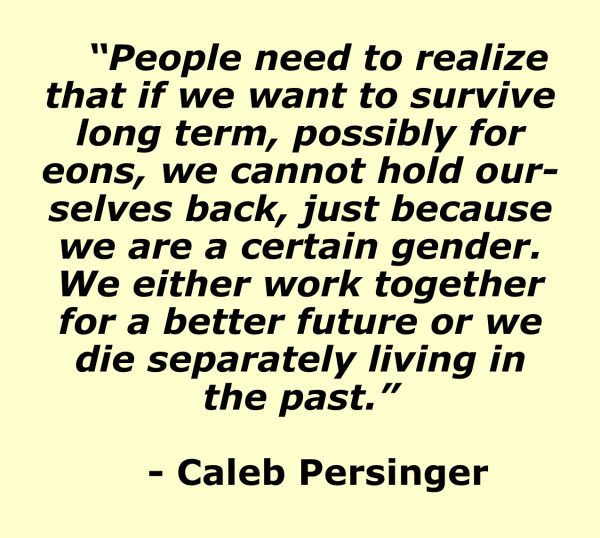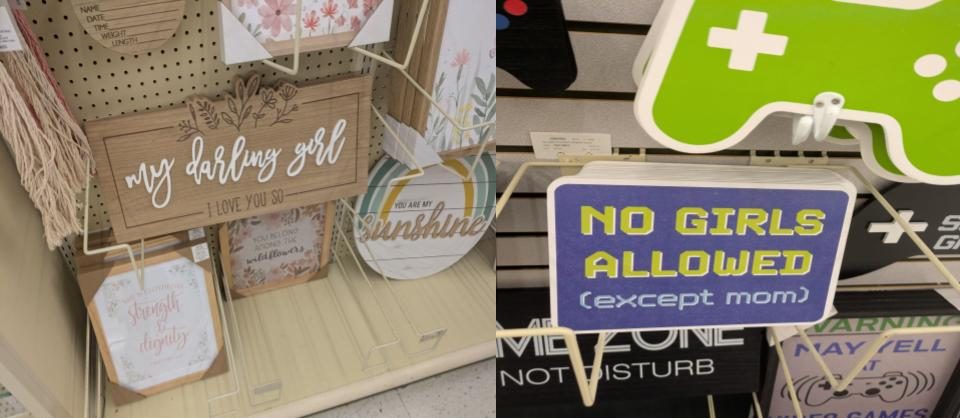Boys will be boys and girls will be girls. The fact that America has not yet elected a female president may contribute to substantiating the old stereotype in the modern age. According to the Pew Research Center, more than three-fourths of the people polled say that there are too few women in high political offices and that there should be an equal number of men and women in these offices.
Gender stereotypes often set expectations for behavior, careers, and personal choices, making many feel pressured to fit all of those socially accepted expectations. It is also crucial to address the effects of these stereotypes and work towards reshaping society’s views on the separation and qualities of the two genders. In an Eye of the Gale questionnaire, those who responded suggested that they oppose gender stereotypes.

LHS senior Caleb Persinger expressed his eagerness to see a positive change in typical gender stereotyping.
“I do believe they should be changed and I think we are on the right path in this regard. I do think eventually stereotypes will be left in the past to focus on the future,” said Persinger.
“This has actually happened throughout history, such as the Rosie the Riveter movement during WW2. During the Rosie the Riveter movement the harmful Stereotype of women being fragile was set aside to help with war efforts,” he said.

LHS freshman Leola Littrell said that she wished gender stereotypes were gone from current society.
“Personally I think that all stereotypes should be gotten rid of for society. As a society I think that we can change stereotypes by redirecting people when it’s clear they believe in stereotypes,” she said.
LHS freshman Tristen Walker also believes standards should be different.
“I think that for both genders things should definitely be changed, and overall expectations should be equal. We are all human no matter what and shouldn’t be looked at differently for a thing that nobody can control,” said Walker.
Research suggests that given the rise of social media and the frequency of teens who spend time searching social media, teenagers often develop a degraded self-image. Social media often compounds stereotypical thinking. In the article, “Hidden in plain sight: how the infrastructure of social media shapes gender norms,” online spaces that promote male supremacy and reject feminism and gender equality have become more prevalent over the past decade (Diepeveen). Adding together the harmful effects of social media and social stereotypes, what’s a teenager to think? Walker, like many teenagers, recognizes how stereotypes impact mental health.

“The most harmful gender-centric stereotype I feel is the stereotype of women not being good at doing things that men do. Stereotypes can affect mental health because it can make people feel inadequate and that because they are the way they are they can never be like others because of things they can’t control,” said Walker.
Littrell agreed with Walker and said that gender stereotypes are harmful to both genders.
“I think that the most harmful is when people think it’s acceptable to physically or mentally hurt people due to their gender. Stereotypes can affect people mentally by making them think that something is wrong with them over stuff they can’t help,” said Littrell.
Persinger added that society’s view on the expectations of girls versus boys must change for society to evolve positively.
“For men and women to truly become equal in both field of work and point of view in our midst would be an achievement bettering our society for generations to come. People need to realize that if we want to survive long-term, possibly for eons, we cannot hold ourselves back just because we are a certain gender. We either work together for a better future, or we die separately, living in the past,” said Persinger.
University studies across the world have researched the old adages that men are expected to be rough and tough while women are expected to be soft and feminine. Despite academic study, society seems slow to change, and stereotypical gender roles are enforced on children in early childhood in both play style and physical appearances (“Boys Don’t Cry: The Problem of Enforcing Traditional Gender Norms on Children”). At what point can society let go of the old stereotypes and recognize that the stereotypes embedded in society do more harm than good?









